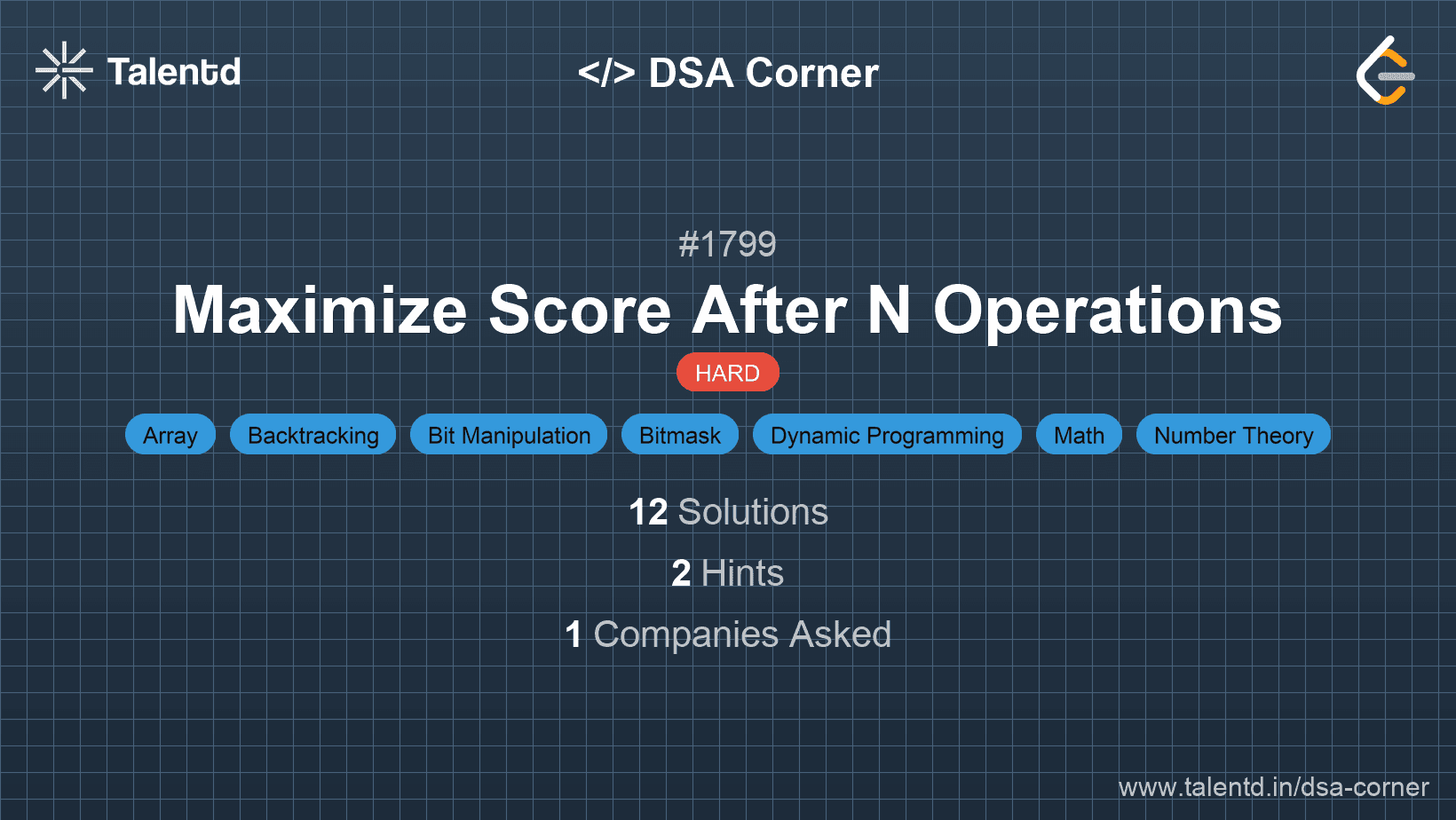
Sponsored
Sponsored
This approach uses backtracking to explore all possible pairs of elements for the operations. The goal is to maximize the sum of scores obtained from each operation. To optimize the solution, pruning is applied by avoiding redundant calculations using a memoization table. By systematically trying all combinations, we gradually eliminate suboptimal solutions and select the maximal score possible.
Time Complexity: O((2n)! / 2^n), the approach explores all possible combinations of pairs.
Space Complexity: O(2^n), for memoization array to store intermediate results.
1import java.util.*;
2
3public class MaxScore {
4 static int gcd(int a, int b) {
5 while (b != 0) {
6 int temp = b;
7 b = a % b;
8 a = temp;
9 }
10 return a;
11 }
12
13 static void backtrack(int[] nums, int n, int used, int currentScore, int[] maxScore, int[] memo) {
14 if (used == (1 << n) - 1) {
15 maxScore[0] = Math.max(maxScore[0], currentScore);
16 return;
17 }
18 if (memo[used] >= currentScore) {
19 return;
20 }
21 memo[used] = currentScore;
22
23 for (int i = 0; i < n; ++i) {
24 if ((used & (1 << i)) == 0) {
25 for (int j = i + 1; j < n; ++j) {
26 if ((used & (1 << j)) == 0) {
27 int pairScore = gcd(nums[i], nums[j]) * (Integer.bitCount(used) / 2 + 1);
28 backtrack(nums, n, used | (1 << i) | (1 << j), currentScore + pairScore, maxScore, memo);
29 }
30 }
31 }
32 }
33 }
34
35 public static int maxScore(int[] nums) {
36 int n = nums.length / 2;
37 int[] maxScore = {0};
38 int[] memo = new int[1 << nums.length];
39 Arrays.fill(memo, 0);
40 backtrack(nums, n, 0, 0, maxScore, memo);
41 return maxScore[0];
42 }
43
44 public static void main(String[] args) {
45 int[] nums = {1, 2, 3, 4, 5, 6};
46 System.out.println("Max Score: " + maxScore(nums));
47 }
48}Java implementation encapsulates a recursive backtracking process. Methods are called recursively to attempt forming the maximum score by pairing elements and using bit-masking for memory optimization.
This approach leverages dynamic programming along with bit masking to compute the maximum score possible. The idea is to use a DP state to remember the best score possible with a certain combination of pairs already taken. The state is determined by a bitmask which indicates the taken pairs. Recursively calculate the maximum possible score, storing intermediate results to avoid repeated calculations.
Time Complexity: O(n^2 * 2^n), where n is the number of elements in 'nums'.
Space Complexity: O(2^n) for the DP array.
The solution maintains a DP array where each entry dp[mask] stores the maximum score achievable for a set of already chosen pairs defined by 'mask'. The nested loops iterate over possible pairings, dynamically updating the DP array.